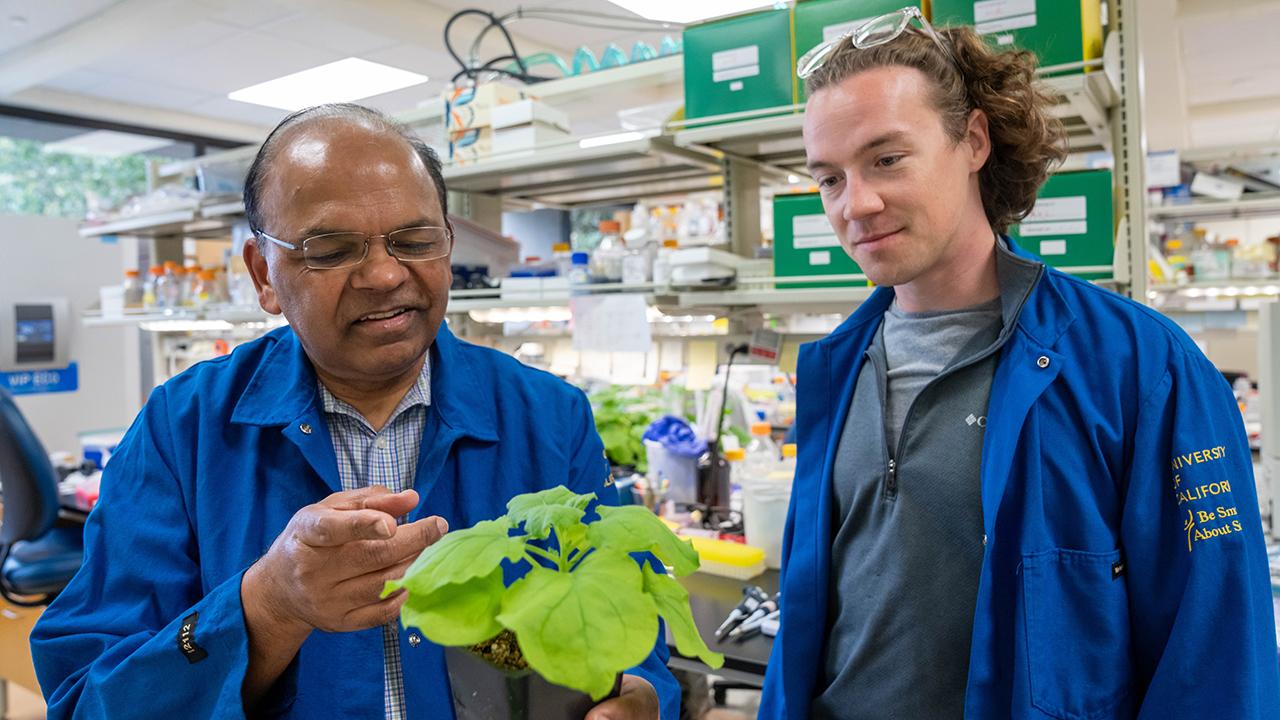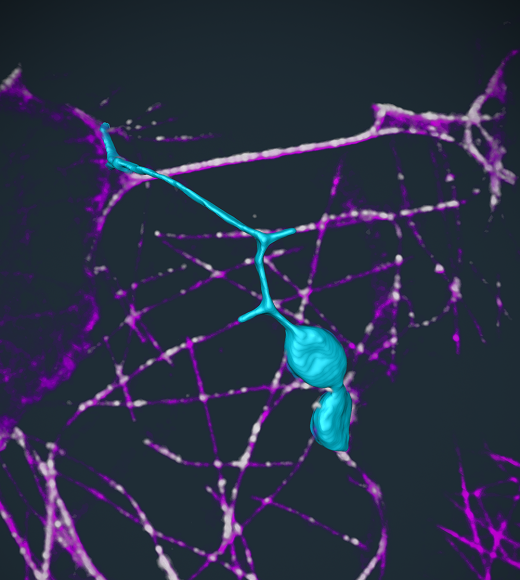
Chloroplasts Do More Than Photosynthesis; They’re Also a Key Player In Plant Immunity
New research sheds light on unique chloroplast structures 100 years after their discovery
Scientists have long known that chloroplasts help plants turn the sun’s energy into food, but a new study, led by researchers in the Department of Plant Biology, shows that they’re also essential for plant immunity to viral and bacterial pathogens.
Chloroplasts are generally spherical, but a small percentage of them change their shape and send out tube-like projections called “stromules.” First observed over a century ago, the biological function of stromules has remained enigmatic.
Previous studies have shown that chloroplasts produce more stromules when a plant detects an infection. Stromules aid in clustering chloroplasts around the nucleus and function as conduits to transport pro-defense signals from chloroplasts to the nucleus. Despite these findings, researchers have not been able to determine the role of stromules in immunity, as no genes involved with the formation of stromules have been identified.
In a new study, Savithramma Dinesh-Kumar, a professor and chair in the Department of Plant Biology, and Nathan Meier, a graduate student in Dinesh-Kumar’s lab, and colleagues have identified a key protein involved in stromule biogenesis during immunity. Their findings were published on October 25 in Science Advances.
Revealing a hidden player in immune defense

In order to test the stromules’ role in immunity, researchers need to switch them off and then observe how stromule-less plant cells fare when faced with a pathogen. However, without knowing which genes are involved with the creation of stromules, it has been impossible for researchers to know which genes to switch off.
To overcome this roadblock, Dinesh-Kumar and his colleagues turned to kinesins, proteins that function as tiny motors that allow molecules and organelles to move around a cell. This intracellular movement usually involves the cell’s cytoskeleton, which is made up of two different types of fiber—large microtubules and smaller actin filaments.
The researchers wanted to investigate a type of kinesin that is unique to plants and capable of binding both microtubules and actin filaments. The researchers found that overexpression of one of these kinesins, KIS1, induced stromule formation in the absence of pathogen infection. When the researchers manipulated tobacco and Arabidopsis plants so that they could not produce the KIS1 kinesin, they found that neither plant was able to form stromules, and their chloroplasts did not migrate towards the nucleus. This left the plants unable to defend themselves from the introduced pathogens.
Stromules and the secrets of chloroplast movement
To disentangle the roles of microtubules and actin, the researchers engineered one set of KIS1 variants that could only bind to microtubules, and another that could only bind to actin. Expression of these variants in tobacco showed that KIS1 needs to bind to microtubules in order for chloroplasts to form stromules, but in order for chloroplasts to move towards the nucleus, it must also bind to actin.
The team also wanted to know how stromules fit into the bigger picture of plant immunity. By using genetic manipulation to switch different immune signals off, they found that stromule formation is triggered by molecular signaling, and that an intact immune signaling system is needed in order for stromules to form.
“If we remove any of the known immune signaling genes, the chloroplasts lose the ability to make stromules, which suggests that these structures are an integral part of the immune signaling pathways that activate defense,” says Dinesh-Kumar.

First-of-their-kind findings shed new light on plant immunity
This study is the first evidence of a plant kinesin directly involved in plant immunity. It’s also the first time that scientists have identified a gene—the KIS1 gene—involved in chloroplast stromule biogenesis, which opens the door to understanding the role of chloroplast stromules, and why chloroplasts cluster around the nucleus during plant immune defense.
“If we can better understand at the cellular level how organelles like chloroplasts help cells to defend themselves,” says Dinesh-Kumar, “we could help to engineer resistance to the pathogen.”
The study was funded by the National Institute of Health and the USDA National Institute of Food and Agriculture. Additional authors include Kody Seward and Jeffrey Caplan of the Delaware Biotechnology Institute and the University of Delaware.
Media Resources
- Liana Wait is a freelance science writer based in Philadelphia. She has a Ph.D. in ecology and evolutionary biology and specializes in writing about the life sciences.
- Calponin homology domain containing kinesin, KIS1, regulates chloroplast stromule formation and immunity (Science Advances)
